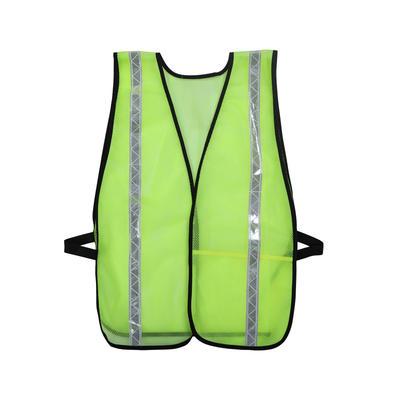Reflective safety vests play a vital role in low-light conditions by significantly improving the visibility of individuals working in such environments. Here are the key reasons why reflective safety vests are important in low-light conditions:
Enhanced visibility: Reflective safety vests are designed with materials that contain reflective properties, often in the form of reflective tape or strips. When light, such as headlights or flashlight beams, falls on these reflective surfaces, it is reflected back towards the source, making the wearer highly visible. In low-light conditions, such as dusk, dawn, or nighttime, when natural lighting is limited, reflective vests make workers stand out and increase their visibility to others, including drivers, equipment operators, and fellow workers.
Accident prevention: Low-light conditions pose an increased risk of accidents due to reduced visibility. Reflective safety vests act as a proactive measure to prevent accidents by making workers more visible to others. When working near roadways, construction sites, or any area with moving vehicles, wearing a reflective safety vest helps drivers and equipment operators identify workers from a distance and take necessary precautions, such as slowing down or altering their path. By increasing visibility, reflective vests reduce the chances of collisions, accidents, and injuries.
Compliance with regulations: In many countries and industries, regulatory bodies enforce the use of reflective safety vests in low-light conditions. Compliance with these regulations is essential to maintain safety standards and ensure worker well-being. By wearing reflective vests, workers not only protect themselves but also adhere to legal requirements, avoiding potential penalties and legal consequences.
Personal protection: Reflective safety vests not only enhance visibility but also provide personal protection in low-light conditions. The vests are typically made from durable, high-visibility materials that can withstand harsh environments and weather conditions. They act as a physical barrier, protecting workers from potential hazards, such as branches, debris, or abrasive surfaces. Reflective vests also often have additional features like pockets or adjustable straps, allowing workers to carry essential tools or equipment hands-free, further promoting safety and convenience.
Peace of mind and confidence: Wearing a reflective safety vest in low-light conditions instills a sense of security and confidence in workers. Knowing that they are taking visible safety precautions helps alleviate concerns about their own well-being and contributes to a positive psychological state. This increased peace of mind can lead to better focus, concentration, and overall job performance in challenging low-light environments.
Emergency response and rescue: Reflective safety vests are also crucial for emergency response teams and rescue workers who operate in low-light conditions. In situations such as accidents, natural disasters, or search and rescue operations, reflective vests make it easier for these personnel to locate and identify each other in challenging environments. They improve coordination, communication, and overall efficiency during critical operations.
